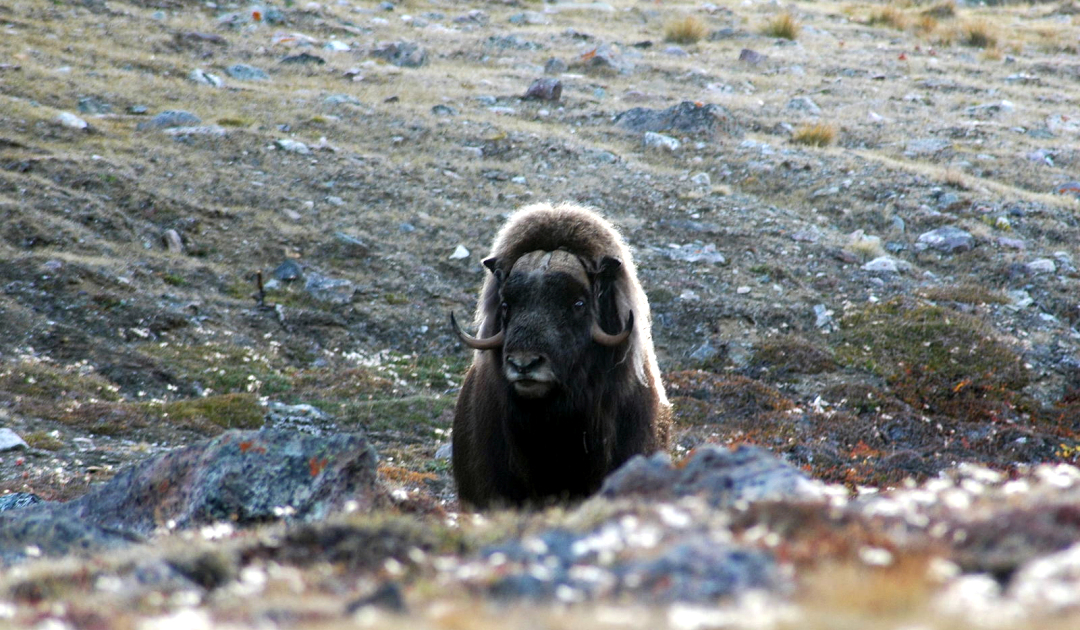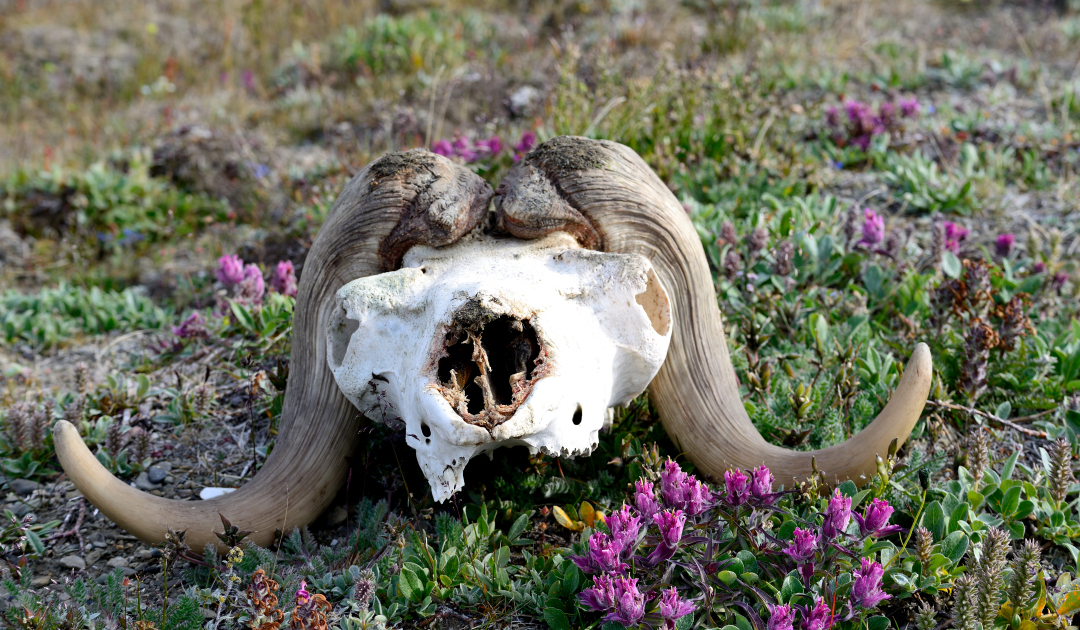
Muskoxen are one of the best known Arctic species. The brawny mammals with their shaggy fur fascinate Arctic residents and tourists alike with their adaptability and way of life. Research is also very interested in these animals, which are not cattle, but goat-related, despite the name. In addition to biologists, ecologists and behavioral scientists, medical scientists have now also discovered the animals for themselves, more specifically neurologists. That’s because one group has found that the animals neurologically are more vulnerable in their fights than previously thought.
The research team at Mount Sinai’s Icahn School of Medicine found that the fierce fighting of muskoxen lead to brain damage, even though a skullcap up to 7.5 cm thick and the horn plate up to 10 cm thick should protect the brain. “We showed that animals which regularly engage in headbutting may actually suffer the kind of traumatic brain injury seen in humans,” explains the study’s lead author Dr. Nicole Ackermans, a neuroscientist and postdoctoral fellow. In particular, the frontal area of the brain, the prefrontal cortex, showed similar amounts of lesions to those found in people suffering from Alzheimer’s disease or chronic brain damage. Although the researchers found no evidence that the animals had died from the damage or had suffered other abnormal neuropathological damage. Nevertheless, it turns out that the previous assumption that the skull bones and thick horn plates protect the brain from damage is not entirely true.

The original idea of the study was to find out more about traumatic brain injury in people. During their investigations, the researchers discovered that bovids have brains folds similarly to humans. In addition, the animals regularly smash each other’s skulls during fights. As a result, the team believes, brain damage could occur, as it does in human accidents. A corresponding study of brains from bovids could therefore provide more detailed information than experiments on rodents, explains Dr. Patrick Hof, professor of neuroscience at Icahn Mount Sinai and leader of the study. “We thought that studying the brains of ramming bovids might provide a better model for understanding TBI in humans.” For their findings, the team examined the brains of three deceased muskoxen, looking for specific markers that occur after brain trauma. To their surprise, they found numerous indications of so-called tau protein tangles in the outer area of the forebrain, which also occur in certain degenerative brain diseases and chronic brain damage.

The team discovered an interesting side finding when comparing the sexes of the three animals. The two female brains had much higher amounts of the protein tangles in the area studied than the male. Muskox females also form a thick horn plate and skull bone, but not to the same extent as males. “This study left us with many interesting questions, like: Why did the female muskox brains appear to have more damage than the male ones? Is this because of differences in skull anatomy?” wonders Dr. Ackermans. Further studies on this could then also reveal ways to better treat or mitigate traumatic brain injury in humans, the researchers are convinced.
Muskoxen belong to the bovids and are goat-related and, like many ibex or bighorn sheep, fight by attacking opponents head on with their horns and skulls. During the fights over females, two males run towards each other at up to 50 km/h and ram each other. Since the males weigh an average of 300 kilos, the ramming force is considerable. The process is repeated until one of the opponents gives up. Slow motion footage clearly shows the strength of the shock waves going through the body on impact. But until now, it was believed that the brain did not suffer any damage during the massive fights. The Icahn team’s study paints a different picture for the first time, showing that these iconic animals, which have roamed the expanses of the Arctic tundra for nearly 1 million years, are more vulnerable than just to climate change.
Dr Michael Wenger, PolarJournal
More on the topic





